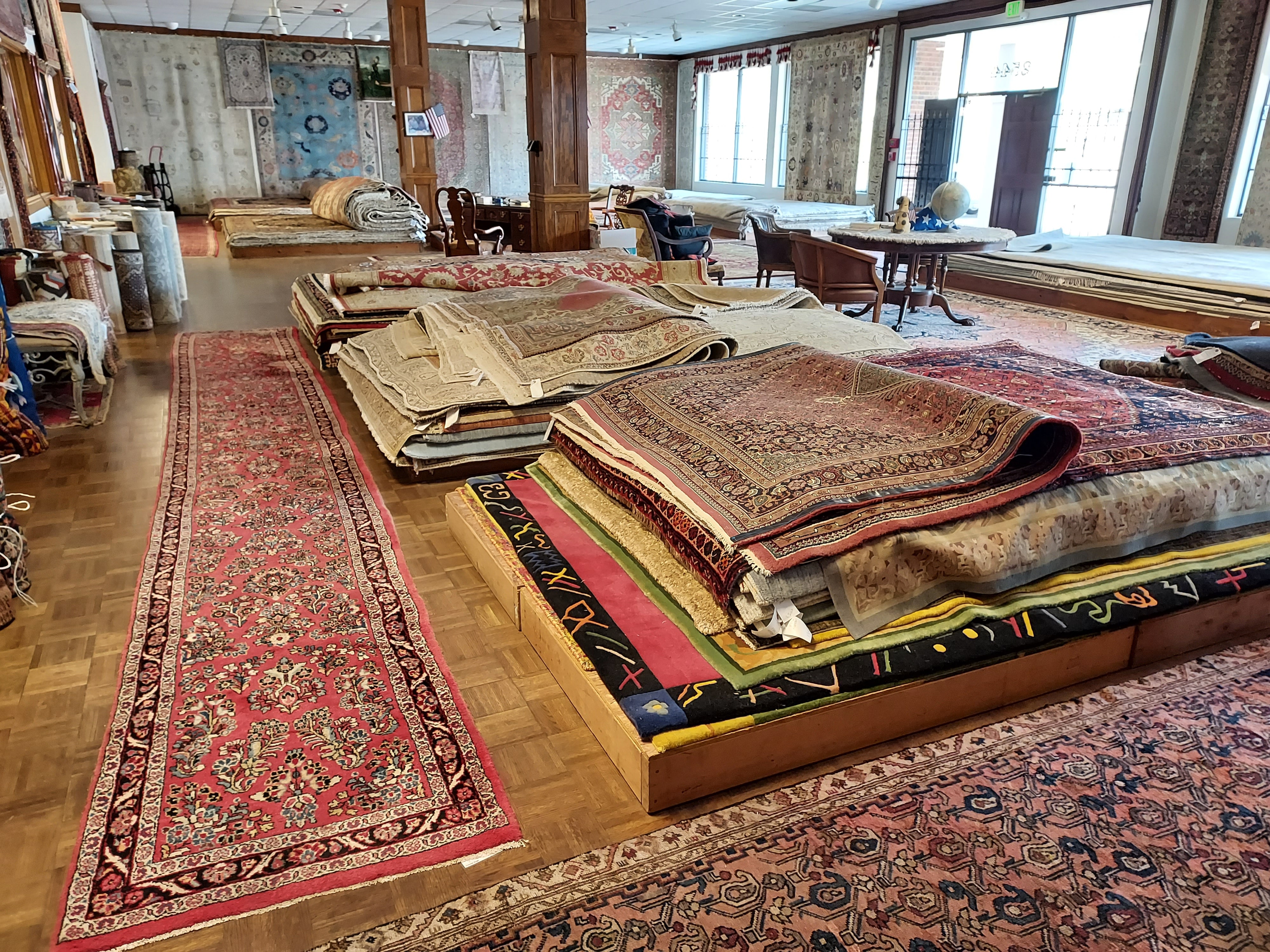Useful Tips on Purchasing a Handmade Oriental Rug.

If you're in the market for a handmade Oriental rug, you should know as much as possible about what you are planning to buy. The more sophisticated you are about the subject of Oriental rugs, the more you'll get for your money. The more knowledgeable you are about the history behind your own handmade piece, the greater your appreciation of the time, effort, and workmanship that went into your purchase.


Basics Of Construction

An Oriental rug is made on a frame called a loom. Columns of thread are stretched from the top to the bottom of the loom. Each column is called a warp. Once the warps are arranged up and down the loom, the weaver makes sideways rows. To do this, he merely takes a thread and passes it over the next until he comes to the end of the loom.
After making about ten rows across, he warps and presses the rows close down to each other; then the weaver is ready to do his main job. Using a piece of wool, he ties one or two warps together to the next one of two warps in the same row, and makes a knot. The weaver works meticulously, knot by knot, row by row, until he completes a magnificent, hand-crafted Oriental rug.
Learn What Happens Before Weaving Begins

A weaver can only start his job after a design has been created. He needs to know the color of the wool (or silk) he must use for each individual knot. First a design is conceived by a master designer. The design is then plotted in color on graph paper with one square on the paper equal to one knot on the rug, which serves as the weaver's guide.
Learn How to Tell a Handmade Rug from One Made by Machine

Pile - Examine the pile. Pile is the name for the strands of material that stand above the base of the rug. Spread the pile apart and look down. If you see knots at the bottom of the pile, the rug was made by hand.
Sharpness and clarity — There's a sharpness and clarity to the design of a handmade product that can never be duplicated in a machine made rug.
Fringes — Normally, the fringes are sewn on to either end of a machine-made rug.
Learn About the Various Names Given to Persian & Oriental Rugs

Tabriz, Kashan, Mashad, Heriz, Bokhara, Qum, Isfahan, Sarouk, Kerman, etc. are names of cities where the rugs are made. Different areas use different kinds of designs — florals, medallions, scenes or geometric patterns. Weavers in those various locations use different kinds of knots and differing numbers of knots per square inch, and they use different kinds of wool or combinations of wool and silk.
Test the Knotting

Make sure the knotting is strong, tight and absolutely impossible to pull out. Count the number of knots per square inch. Bring along a ruler, measure off an inch on the back of the rug, and start counting. The square of the number of knots you count will give you the number of knots per square inch.
The more knots per square inch, the more exact, defined and intricate the picture or pattern will be. Exquisite museum-quality pieces may have as many as 1,000 knots per square inch and take ten years to make. Additionally, the more knots per square inch, the better and more durable the rug as the knots help reinforce each other and reduce overall wear.
However, you must remember that a variety of other factors besides the number of knots per square inch determines what makes one rug worth more than another.
Buy from a Direct Importer

Eliminate the middle man and his markup. Nilipour Oriental Rugs is a Direct Importer of Oriental rugs and can save you a substantial amount of money.
Study Your Decor & Know the Size of Your Room or Wall

It will help you know what to look for.
Buy from a Company That Is Able to Maintain Your Rug

Your Oriental rug should be checked periodically for moth damage, fringe damage, stains that could become permanent, etc.
Deal with a Reputable, Long-Established Firm

Established in the early 1900's in the thriving Oriental Rug market of Persia, Nilipour's heritage continues. Four generations later, our family business carries on the customer-satisfying tradition through quality merchandise at lowest prices right here in America. Nilipour's richly overflowing showroom is located in the heart of the South. We invite you to come, experience and invest!
Since 1972, Nilipour proudly maintains a reputation for honest and trustworthy transactions, having developed a network of clients from all over the nation who have become friends.

Go to A Company With a Big Inventory & Plenty of Variety

There are dozens of different kinds of Oriental and Persian rugs. The more you see, the greater your chance of discovering your special rug; one that not only excites you but suits your taste and budget down to a tee.
When You Want More Help or Information

If you would like to know more information that pertains to Oriental rugs, we will be happy to be of service to you. We invite you to browse our showroom and choose from our vast collection of individually hand-selected Orientals. Nilipour offers antiques and new pieces from various countries of the world — Persia, Pakistan, India, China, Turkey, Kazakhstan, Caucasus, and other such regions. We look forward to serving you!
